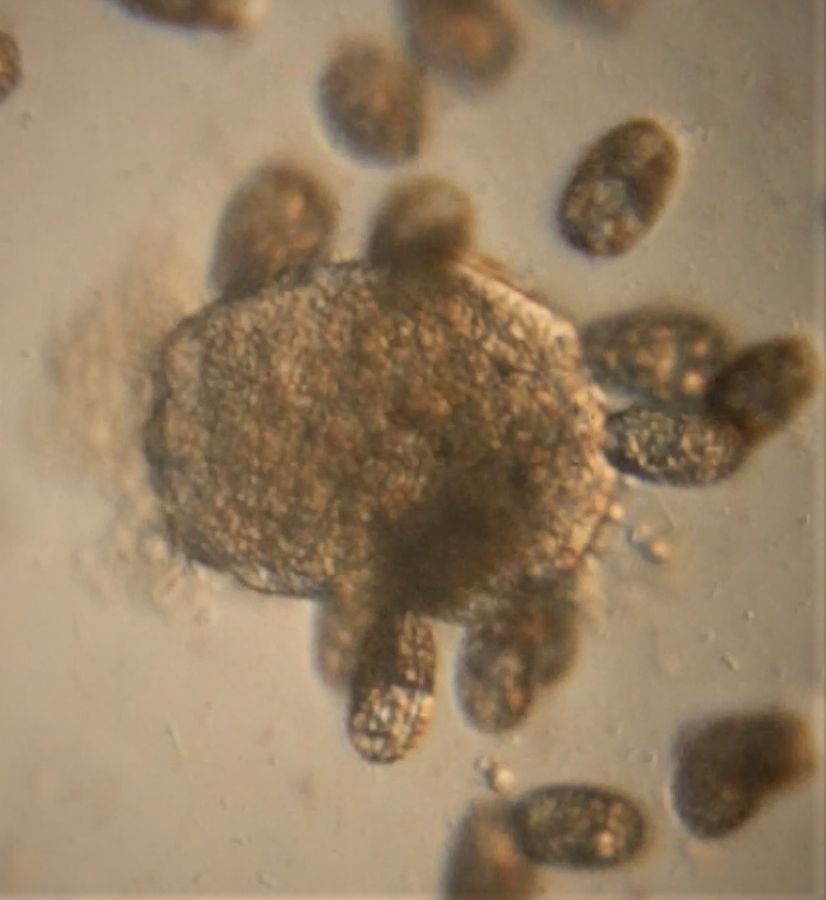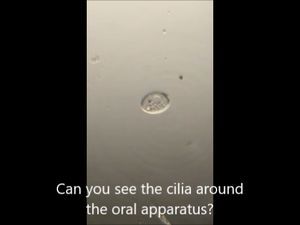Coleps: The Piraña of the ciliates
 Mar 13, 2019 • 11:12 AM UTC
Mar 13, 2019 • 11:12 AM UTC Unknown Location
Unknown Location 140x Magnification
140x Magnification Microorganisms
Microorganisms
laksiyer
Human observer of life. https://sukshmadarshin.wordpress.com
97posts
1255comments
5locations

One of the most deadly ciliates that can even take on larger predatory ciliates like Didinium is Coleps . These are barrel-shaped ciliates with characteristic plate-like structures. They often hunt in packs and clean up dead ciliates or weakened ones. I have been inadvertently growing Coleps , while studying interactions between Didinium (the T-Rex of the ciliate world), and its prey Paramecium . To my disappointment, whenever I would set up predator-prey assays, the Didiniums would all but disappear– no cysts either. I often wondered what the issue was until now. Here is a somewhat bizarre incident. A Didinium is caught swallowing another of its kind (my first observation of a cannibalistic interaction), and while this was happening it was attacked by a school of Coleps . You will agree that it resembles a Piraña attack. It actually raises some interesting questions and a hypothesis which are listed after the movie.
Note that the video was accelerated at various points. The whole process took about 3-5 min. Clearly, some aspect of the inner cytoplasm attracts Coleps. While the Didinium was swallowing another, the Coleps congregated around the kill. I have seen on numerous occasions that whenever Didinium attacks a Paramecium (will upload soon), it attracts a large number of Coleps to it. What might this principle be? Could it just be a salt such as Calcium or perhaps released intracellular organelles such as alveolar sacs? If you put Didinium and Paramecium together, the former completely obliterates the latter, which is itself a bizzare Predator-Prey dynamic. Beyond this, cannibalizing its own kind is even more bizzare. It is like an eating machine that almost eats itself. What is the evolutionary advantage of this hedonism in Didinium ?
Sign in to commentNobody has commented yet... Share your thoughts with the author and start the discussion!

 0 Applause
0 Applause 0 Comments
0 Comments_300x300.jpeg)

















